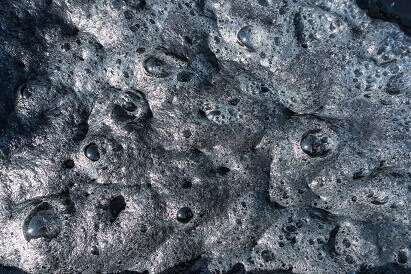Slurries
Slurry Pumps for Industrial Applications
Slurry pumping requires a pump that is capable of withstanding abrasive and hostile fluid, often with solid particles. The process differs significantly from sludge pumping in both composition and performance demands. 
While sludge generally refers to thick, dewatered material with high solid content, slurry is a fluid mixture of water and suspended solids, often with a lower concentration of solids and a more flowable consistency. Typical applications include mining, quarrying, mineral processing, stone cutting, and other abrasive industrial processes.
Slurry pumping presents a challenge when planning processes due to the erosive and sometimes corrosive nature of the materials being handled. This means that the pump must be able to tolerate constant wear, high velocities, and varying particle sizes — whilst maintaining efficiency and reliability.
Slurry Pump Materials and Sealing Considerations
When specifying a pump for slurry transfer, it is vital that the pump is built from materials that resist abrasion and, if applicable for your process, corrosion. Depending on the solids being pumped, some suitable materials may be; natural or synthetic rubber, high-chrome iron, stainless steel or duplex alloys (for corrosive slurries).
Sealing is crucial when specifying slurry pumps due to the risk of abrasive particles damaging mechanical seals. Common approaches include:
Gland packing – which is easy to adjust and maintain
Flush-sealed or lubricated mechanical seals
Expeller seals for reduced wear and minimal leakage
Seal less Pumps
Pumps for Slurry Applications
Peristaltic Pumps
Peristaltic pumps use a rotating roller or shoes to compress a flexible hose. This moves the slurry without contact with other pump components making them ideal for abrasive or corrosive slurry transfer.
Benefits:
Ideal for abrasive slurries.
No valves or seals in contact with fluid.
Self-priming and can run dry without damage.
Disadvantages:
Hose/tube may need periodic replacement.
Lower flow rates and pressure limits compared to other types.
Not always suited for high-volume, continuous-duty operations.
Air Operated Double Diaphragm (AODD) Pumps
AODD pumps use compressed air to move diaphragms back and forth. which draws and discharges slurry through check valves. This type of pump is versatile with efficiently solids handling.
Benefits:
Can pump abrasive and viscous slurries.
Dry-running and self-priming capability.
Can be used in ATEX environments.
Disadvantages:
Low and pulsating flow may restrict some processes
Can clog or act as a filter if there are large amounts of particles
Requires compressed air
Centrifugal Slurry Pumps
Centrifugal Slurry Pumps use a spinning impeller to transfer slurry. They are designed with wear-resistant materials so can handle abrasive and fast-moving solids.
Benefits:
Designed specifically for abrasive, fast-moving slurries.
Available with rubber or metal linings for wear protection.
High flow capabilities and widely available spares.
Disadvantages:
Needs priming or immersing in fluid
Not ideal for very high-viscosity or settling slurries.
Seals and bearings may require more frequent maintenance or feedwater supply for seal flushing and cooling.
Lead times can be extended due to metals used in manufacture.
Progressive Cavity Pumps
Progressive Cavity Pumps feature a helical rotor turning inside a stator. This moves the slurry in a smooth, low-shear, sealed flow path, making it a suitable option for thick or shear-sensitive slurries.
Benefits:
Smooth, low sheer, non-pulsating flow
Handles high-viscosity and abrasive fluids
Self-priming
Disadvantages:
Stators can wear quickly with abrasive slurries meaning they have to operate at slow speeds
Not ideal for fluids with large, sharp solids.
Self-Priming Pumps
Self-Priming Pumps are designed to re-prime automatically after initial fill, suitable for handling water and light slurries from sumps or pits.
Benefits:
Can re-prime automatically
Some models can handle solids
Easier maintenance access compared to submersible pumps.
Disadvantages:
Not suitable for very abrasive or high-solids slurries unless specified
Efficiency can drop with increased solids content or wear.
May require external priming systems in some cases.
North Ridge Pumps supplies a wide range of slurry pumps tailored to your application — whether it involves aggressive quarry waste, mineral slurries, or industrial by-products. We’ll ensure your solution is built for longevity, reliability, and maximum efficiency.
Speak to our technical team today to find the right slurry pump for your process.





